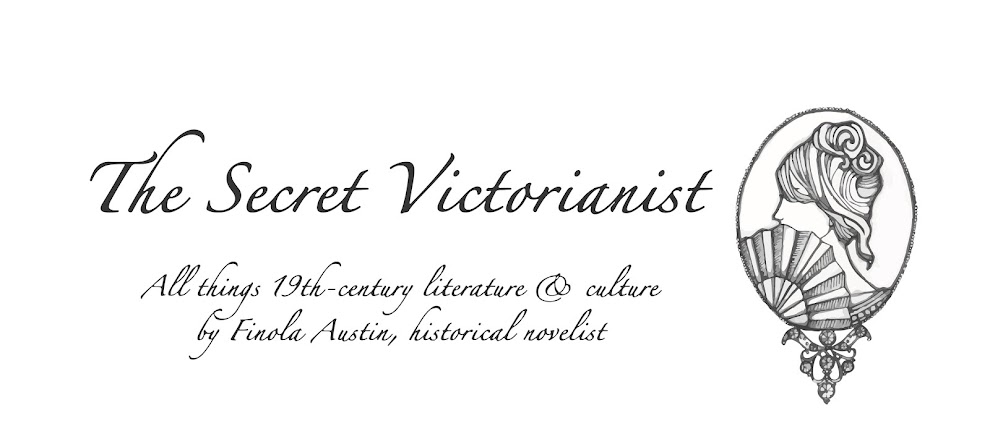‘I am more jealous of the mind than of the body; and, to me,
there is something revolting in the notion
of a woman who professes to love and belong to you alone, going and
printing the secrets of her inmost heart, the sacred workings of her soul, for
the benefit of all who can pay for them.’
In an earlier post, I looked at how domestic and dramatic
women are often paired in Victorian literature – whether the writer’s aim is to
contrast them or show them to be similar. I discussed how working actresses and
middle-class women were connected by a sense of sisterhood – something which
raises the possibility of domestic feeling in the theatre, and drama in the
home – and used the example of Geraldine Jewsbury’s 1848 novel The Half-Sisters to show how this
sisterhood is literalised in the characters of Alice (the leisured wife) and
Bianca (the leading lady).
The Half-Sisters
is also instructive about one the suspicions attached to the nature performance
itself – on the stage or the page or in the home. Conrad’s rationale for his abandonment
of Bianca, a section of which is quoted above, is a strong articulation of the
nineteenth-century suspicions surrounding the woman who acts. And while
Bianca’s status as virtuous heroine in the novel makes Conrad a far from
likeable character, the space given to his views and the lack of resolution to
some of his concerns provided by the novel, makes the passage worthy of serious
attention.
Key to Conrad’s aversion to performing women is jealousy – a
species of jealousy which includes but also goes beyond the sexual. Performance
in front of an audience is akin to prostitution – something hinted at in much
writing of the time but made explicit here:
‘A woman who makes her mind public, or exhibits herself in
any way, no matter how it may be dignified by the title of art, seems to me
little better than a woman of the nameless class.’
Actresses are especially open to this charge (although
‘authoresses’ are not immune to it) ‘for that [acting] is publishing both mind
and body too’. Conrad is jealous of the ‘gross comments’ made by other men in
the audience, even though he is a fully participating one of their number. And
he fears that becoming ‘accustomed to admiration’ will give a woman an appetite
for flattery which will not be satisfied by the romantic (and implicitly
sexual) interest of a (single) husband.
Conrad’s views however, are confused and undermined by two
key contradictions – one within his own argument, the other demonstrated by the
course of the novel itself. First, Conrad’s stress on the overt sexuality of
the actress is offset by his simultaneous claim of the unsexing of any
professional woman:
‘Take Bianca, if you will, as a specimen, she is one of the
best, and what has been its effect? it has unsexed her, made her neither man or
woman. A public life must deteriorate women.’
Performing women are duplicitous because they use their
feminine charms (‘use their sex as a weapon’) and ‘play with the passions of
men to some degree like courtesans’ but this flaunting of the female
attractiveness must make them like men in Conrad’s reductive view of ideal
feminine virtue – domestic, weak and unequivocally asexual. What men have to
fear in women is something which precludes them from being classed as a woman
at all.
Yet the novel demonstrates that this ideal domestic woman is
a fiction. Alice, Bianca’s legitimate half-sister comes incredibly close to
matching Conrad’s ideal woman:
‘A rational, though inferior intelligence, to understand me
and help me in my pursuits, clinging to me for help, looking to me for
guidance; a gentle, graceful timidity keeping down all display of her talents,
a sense of propriety keeping her from all eccentric originality, either of
thought or deed’
But Alice is shown to be subject to the same passions as
Bianca, and it is ultimately she who transgresses sexually and socially.
Jewsbury however shies away from absolutely contradicting
Conrad’s views in her ending – Bianca quits the stage in order to enjoy her
domestic bliss. And the sexual jealousy involved in watching one you love
perform for another is shown to be an unavoidable side effect of artistic
display. In Jewsbury’s own letters to another woman – Jane Carlyle
– she wrote:
‘I can use no expressions of affection. I don’t like using
them. I am jealous of giving you what I have ever offered to another, and
besides, talk as much as you will, it’s the same thing over and over; you will
let me be yours, and think of me as such, will you not?’
Repeated expression of love, whether performed on stage, or
articulated in hackneyed expressions, cheapens it and so jealousy is a natural
end, even if this jealousy is directed towards the very language used to
articulate these feelings. Jewsbury may discredit Conrad, and may highlight his
hypocrisy when it comes to his treatment of Bianca, but, like him, she yearns
for the unique and the entirely private
when it comes to the ‘performance’ of love.
What should be K in my Victorian Alphabet? Let me know below, on Facebook or by tweeting @SVictorianist. And don't forget to VOTE for the Secret Victorianist in the UK Blog Awards!






